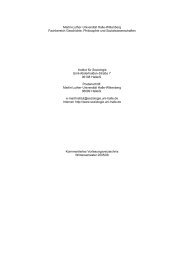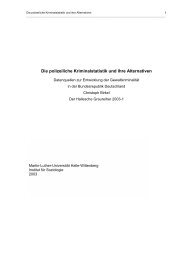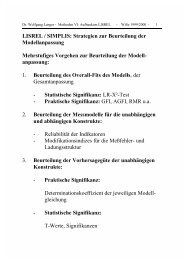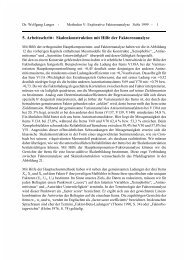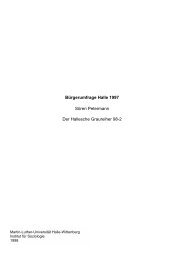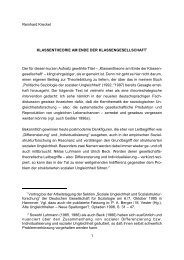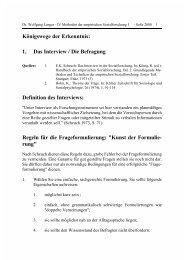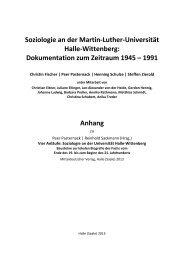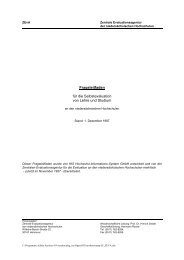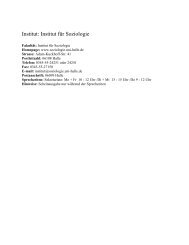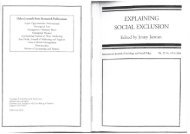Introduction to Stata 8 - (GRIPS
Introduction to Stata 8 - (GRIPS
Introduction to Stata 8 - (GRIPS
Create successful ePaper yourself
Turn your PDF publications into a flip-book with our unique Google optimized e-Paper software.
15.7. ado-files [U] 20-21, [P] (Programming manual)<br />
An ado-file is a program. Most users will never write programs themselves, but just use<br />
existing programs. If you are a freak, read more in the User's Guide ([U] 20-21) and the<br />
programming manual [P]. Save user-written programs in c:\ado\personal. To see the<br />
locations of all ado-files issue the command sysdir.<br />
The simplest form of an .ado file is a single command or a do-file with a leading program<br />
define command and a terminating end command. There must be a new line after the<br />
terminating end.<br />
Here is an example <strong>to</strong> demonstrate that creating your own commands is not that impossible.<br />
datetime displays date and time<br />
program define datetime<br />
// c:\ado\personal\datetime.ado. Displays date and time.<br />
display " $S_DATE $S_TIME "<br />
end<br />
Just enter datetime in the command window, and the date and time is displayed:<br />
. datetime<br />
9 Feb 2003 16:54:15<br />
Two ado-files useful for the interaction between <strong>Stata</strong> and NoteTab are shown in appendix 3.<br />
foreach and forvalues<br />
[P] foreach; forvalues<br />
These commands are documented in the programming manual, and in the online help (whelp<br />
foreach). Also see the FAQ www.stata.com/support/faqs/data/foreach.html. They enable<br />
you <strong>to</strong> repeat a command for a number of variables or values. The commands can be used not<br />
only in ado-files, but also in do-files and even interactively. Look at the sequence in section<br />
11.1:<br />
foreach Q of varlist q1-q10 {<br />
tabulate `Q' sex<br />
}<br />
Q is a local macro (see [U] 21.3); foreach defines it as a stand-in for the variables q1 <strong>to</strong><br />
q10, and the sequence generates ten tabulate commands. The local macro is in effect<br />
only within the braces {} which must be placed as shown.<br />
When referring <strong>to</strong> the local macro Q it must be enclosed in single quotes: `Q'. In the<br />
manuals single quotes are shown differently; but with a Danish keyboard the opening quote is<br />
` (accent grave), and the ending quote the simple '.<br />
62



